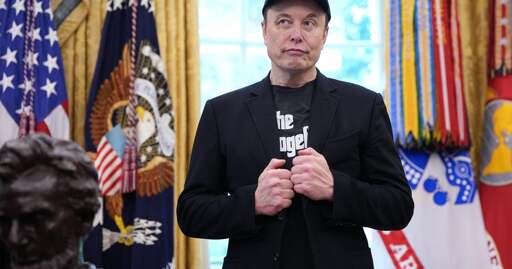Pentagon to start using Grok as part of a $200 million contract with Elon Musk's xAI
-
This post did not contain any content.
And all the pentagons info is compromised…
-
It’s even worse when you remember the news from just the other day that grok is looking at elon’s tweets to determine it’s opinion on topics
That's why the news that Grok is racist is true. The US government will be even more systematically racist now.
-
This post did not contain any content.
Wow. End of line man.
-
This post did not contain any content.
Our government is a kleptocracy. We've Afghanistan'd ourselves. Got what we deserve i suppose
-
Living outside the US I'm not sure if I should be glad or terrified by the Pentagon's incompetence in these worrying times. Maybe I'm... I don't know, 20% glad and 80% terrified? Sounds about right.
You should be more terrified. And also more glad
-
This post did not contain any content.
Ellen really wants to be a super villian.
-
This post did not contain any content.
Why even work anymore? To pay taxes for this shit?
-
This post did not contain any content.
Dude you can just fucking download open LLM models suited for particular tasks and get a semi competent team of programmers/IT/engineers to do whatever Grok does much better for a minute fraction of that cost. Talk about the department of government inefficiency.
-
This post did not contain any content.
They’re going to get someone killed
-
This post did not contain any content.
oh no are you telling me that the breakup between fascist A and fascist B was just play theater?! who could have ever seen that coming omg.... what a surprise this world is
-
This post did not contain any content.
What the fuck guys, who wished for 'real life tony stark, lol' on the cursed monkey paw!?!? GUYS?!?!
-
This post did not contain any content.
On the plus side, the first thing it's gonna do is nuke Israel
-
They’re going to get someone killed
I don't think so. I think they'll either use it for very benign tasks or they'll get a LOT of people killed.
-
This post did not contain any content.
And here I thought Trump and musk were no longer buddies.
-
This post did not contain any content.
I wonder if they’ll make it operational on August 29th
-
And here I thought Trump and musk were no longer buddies.
“Bro, let’s pretend like you hate me so people buy my cars again”
-
Dude you can just fucking download open LLM models suited for particular tasks and get a semi competent team of programmers/IT/engineers to do whatever Grok does much better for a minute fraction of that cost. Talk about the department of government inefficiency.
Dept of Grift Engineering
-
This post did not contain any content.
Remember when the Pentagon spent something like 600 million dollars in new accounting software to find the missing 400 million dollars? Something like that. I'm guessing this deal was made when they were still buddies and the Pentagon is just now getting around to it considering the speed of government is slower than constipated molasses. I'm also imagining someone just rubber stamping anything coming across their desk and this is how we got here. If there is any hope, Grok will be shoved into a corner doing nothing except earning dividends for that ketamine fueled moron and and fall in line with the Pentagon's egregious wasteful spending that nobody in congress seems to care about.
-
I wonder if they’ll make it operational on August 29th
Is there something special about that date?
-
I think it's hilarious that you think that a multimillion dollar over engineered autocorrect is gonna somehow become sentient and destroy the world. It can't even do math correctly.








